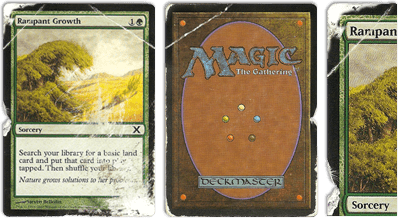America is a little bit like a stitched together quilt. Its residents boast unique and diverse backgrounds. They’re strong and beautiful in their own right, but when brought together, they form something completely new. Like a patchwork quilt, America’s strength is in its different pieces and the binds that hold them together.
In 2014, legendary designer Use Rosenberg used polyomino tiles as part of the mechanics in a game, the first of what would become a series of titles. Famous for creating games with interesting themes including everything from bean farming and monastery management to glass manufacturing, it comes as no surprise that Rosenberg was able to create a fun and engaging game about sewing together a quilt made from discarded pieces of fabric.

In Patchwork, two players put their skills to the test as they compete to make the most valuable quilts. Each player has a personal 9x9 board on which to construct their quilt. Patches of fabric are placed in a circle around the main board. Each patch has cost in buttons (the currency in the game) and a time value. The time value indicates how long it will take to add that particular patch to your growing quilt.
The neutral pawn is placed in the circle to the left of the smallest fabric patch. This pawn indicates which fabric tiles you can acquire on your turn. When you take a new tile, you pay its cost and move the pawn to the location of the tile you just took. You always have the three tiles immediately following the neutral pawn to choose from when you’re choosing this action.
The Time board tracks the amount of time you have spent working on your quilt. As you gain new fabric, it will have a time value and a button value on it. The button value indicates how many buttons you have to pay to take the tile, and the time value indicates how far forward you have to move along the track on the time board. The bigger the piece of fabric you take, the more it’s going to cover of your personal board. At the same time, it’s going to come with a heftier cost, both in buttons and time.

Time is a super important element in Patchwork, because the game does not follow a traditional alternating turns model. The player who is the furthest back on the time track takes the next turn. This can result in a player taking several turns in a row if they plan them out carefully. There is some incentive to rush ahead on the time track as well. Scattered along it are single square pieces of fabric that are claimed by the first player to land on them or pass them. These are the only single-squares in the game, so being able to get your hands on them can be extraordinarily valuable. As fabric tiles are acquired, they are immediately added to the player’s personal board, building the quilt they are working on. As the quilt grows, certain pieces will become more valuable, assuming they can get their hands on them.
Players are trying to fill in as many of the open spaces on the board as possible, so finding that perfectly fit - ting piece is not only satisfying, it’s valuable to the final score. If you’re a little lucky and you planned well, you can also receive a bonus for being the first player to fill in a 7x7 section on your personal board. That will earn you seven buttons at the end of the game.
There may be turns where a player either can’t afford one of the three available fabric tiles or decides they don’t want any of them. In this case they can choose to advance their time token to the space directly past the other player, earning a button for every space they pass in this manner. It makes for a less exciting turn, but can set a player up well for future turns.
Some of the fabric tiles players add to their quilts during the game have buttons on them. These tiles earn button income every time they pass the button symbol on the time track.

The game ends when the second player reaches the end of the time track. As each player hits the end, they receive one final income of buttons. They then total the number of buttons they’ve gained during the game, including the 7x7 bonus tile if they won it. Players are going to want to fill in as many spaces as possible on their quilt board. For each uncovered space, they subtract two points from their overall total. The player with the most points at the end is declared a master quilter, an honor they can hold over their opponent until the next match.
Patchwork Americana combines the original ruleset of the game with all new art and theme in a game exclusive to the U.S. market. Replacing the random scraps of fabric from Patchwork are rich, vibrant swatches with American themes like stars, stripes, and flags. On their own, each piece has potential. Whether building a quilt, or uniting a nation, it’s when they’re brought together to form a whole that their true beauty is realized. This new exclusive version mirrors this concept in a simple yet beautiful way.

Patriotic quilting fans will be able to get their hands on Patchwork Americana when it hits local gaming stores later this year.


 '
' '
' '
' '
' '
'